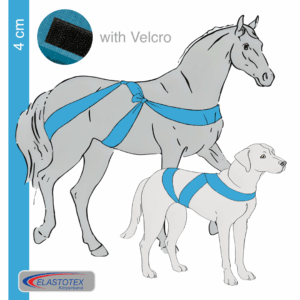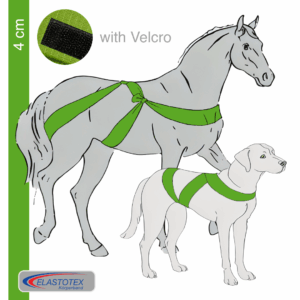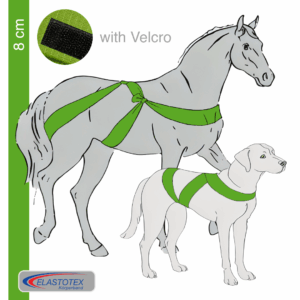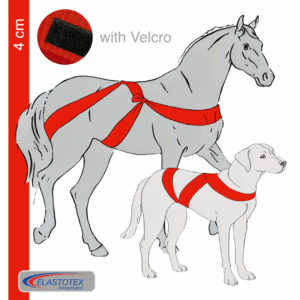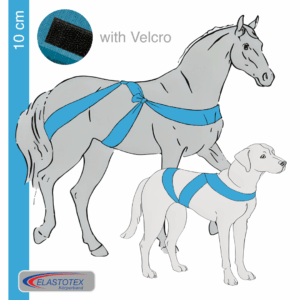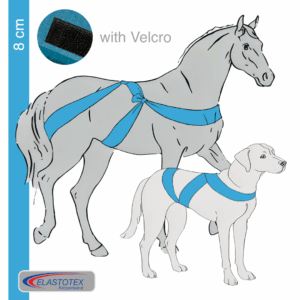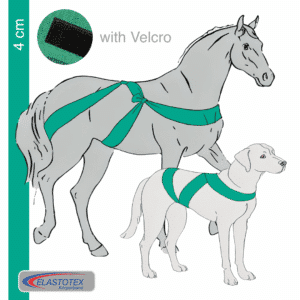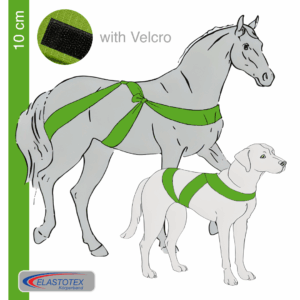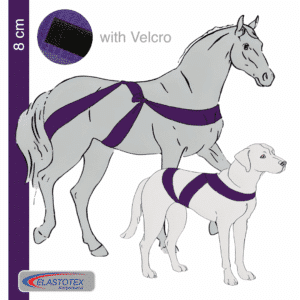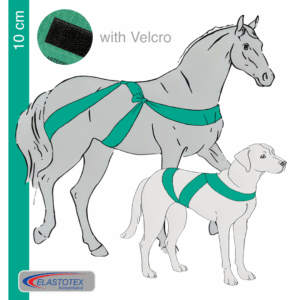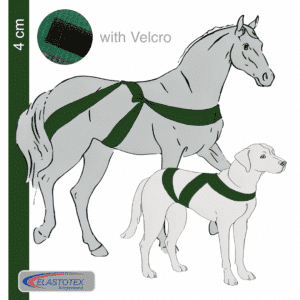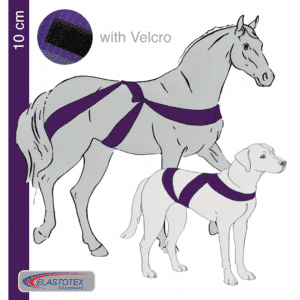🎗️ Required Material:
Two bands with a width of 10 cm (for small horses or ponies, 8 cm is sufficient).
✨ Effect & Benefits:
The neck-trunk body band connects the basic body band at the neck with an additional band around the trunk.
It helps horses get accustomed to the feeling of a girth, releases tension in the chest and shoulder area, and prepares them for wearing a lunging or driving girth.
Both young and older horses can benefit from it.
📝 Application:
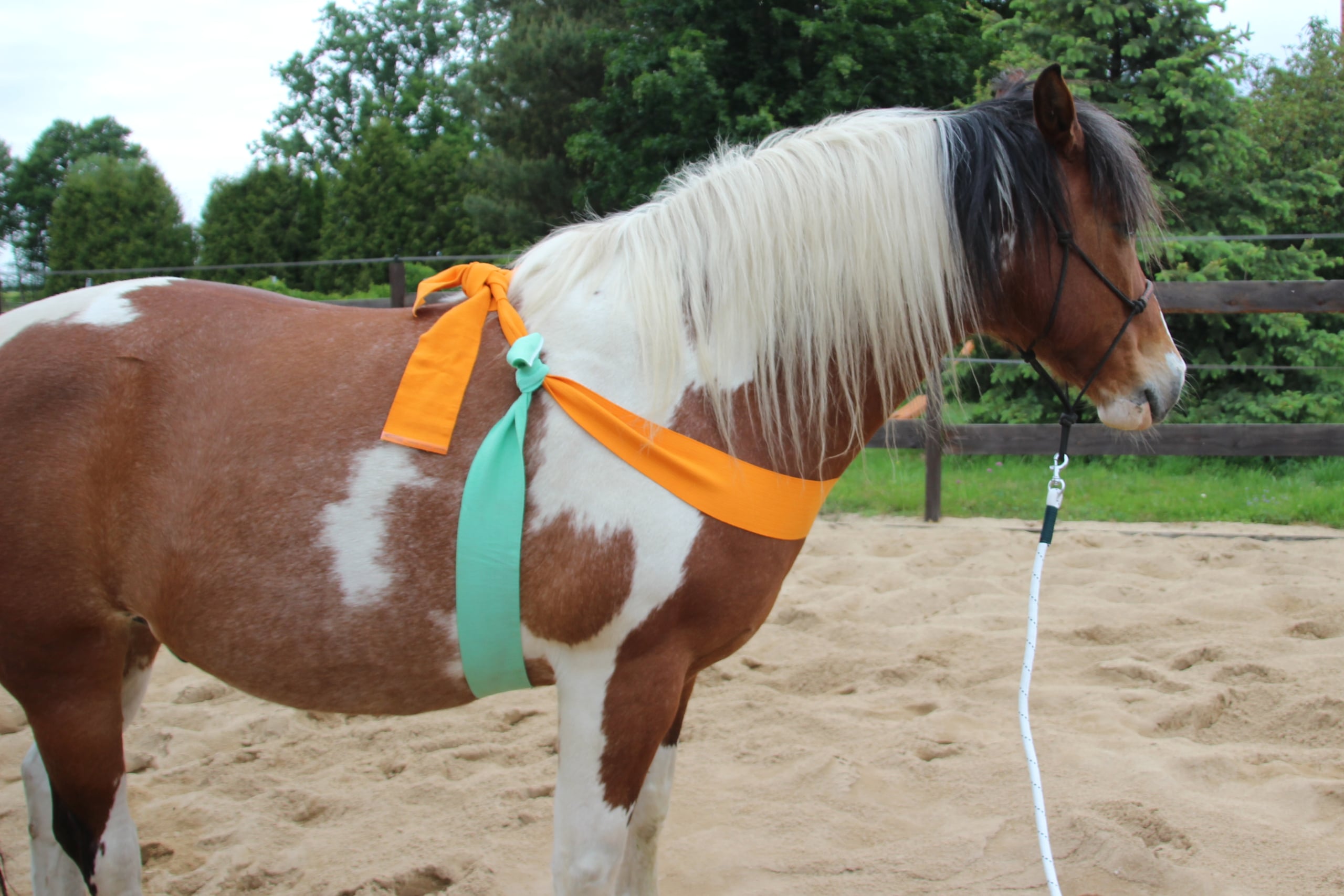
- First, place the basic body band around the neck.
- Guide the second band behind the shoulder around the trunk and hand it to a second person on the right side.
- The band is guided around both sides of the neck band and tied.
- Tie the ends loosely with a knot that can easily be released.
👀 Observations:
Many horses respond to the neck-trunk body band by lowering the neck, visibly relaxing, and engaging the hindquarters more actively.
Movements often appear longer and freer, while the base of the neck softens.
It is particularly interesting to observe the horse before and after applying the band and compare the changes in posture and expression.
📌 Important Notes:
- Pay close attention to your horse – signs of insecurity include fixed eyes or tense ears, restless breathing, or stiff movements.
- With nervous horses, two people can help by initially just holding the bands at the sides until the horse gets used to them.
- Give the horse time to become familiar with the contact before fully applying the band.
🔀 Variations & Further Use:
- For larger horses, the neck band can be tied with a “tail” to which the second band is attached.
- The neck-trunk body band can also be combined with other techniques, such as the double-loop body band, to support specific areas of the body.
💡 Our Tip! 💡
When lunging, the neck-trunk body band is a gentle aid.
Unlike side reins or rigid training aids, it encourages the horse to find its own balance, lift the withers, and move more freely.
